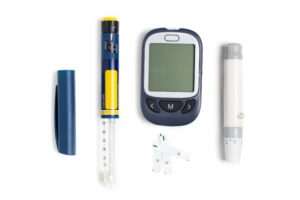What’s the Difference Between Type 1 and Type 2 Diabetes?
 Understanding the difference between type 1 and type 2 diabetes is crucial for patients, caregivers, and anyone interested in health and wellness. The two types share a name and have similar symptoms, but their causes, risk factors, and treatment approaches differ. Learn more about these key distinctions in this overview of type 1 vs. type 2 diabetes.
Understanding the difference between type 1 and type 2 diabetes is crucial for patients, caregivers, and anyone interested in health and wellness. The two types share a name and have similar symptoms, but their causes, risk factors, and treatment approaches differ. Learn more about these key distinctions in this overview of type 1 vs. type 2 diabetes.
The Basics of Diabetes
Diabetes is a chronic health condition characterized by high blood glucose (sugar) levels. Insulin, a hormone produced by the pancreas, helps control glucose levels. However, in patients with diabetes, the body’s relationship with insulin is disrupted, leading to elevated blood sugar levels. Shared symptoms of type 1 and type 2 diabetes include frequent urination, increased thirst, fatigue, blurry vision, dry skin, and increased infections. Understanding this common thread is the starting point for further exploring diabetes differences.
Type 1 Diabetes is an Autoimmune Response
Type 1 diabetes, which often appears during childhood or adolescence, is considered an autoimmune condition. This means the immune system mistakenly attacks healthy cells—in this case, the insulin-producing beta cells in the pancreas. As a result, the pancreas produces little to no insulin. Without insulin, glucose cannot enter the body’s cells to deliver energy, leading to high blood sugar levels.
The causes and risk factors for type 1 diabetes aren’t thoroughly understood, though family history and genetic predisposition may play a role. Type 1 is less common than type 2, accounting for less than 10 percent of all diagnosed cases of diabetes.
Type 2 Diabetes Stems from Insulin Resistance
Unlike type 1, type 2 diabetes is characterized by insulin resistance. It develops over many years and is related to lifestyle factors that cause the body’s cells to be less responsive to insulin, leading to excess glucose in the bloodstream. The pancreas produces more insulin to compensate but can’t keep up in the long term, allowing diabetes to develop.
The diverse risk factors for type 2 diabetes include obesity, physical inactivity, age, genetics, and a history of gestational diabetes. Type 2 diabetes represents at least 90 percent of all diabetes cases.
Treatment Approaches for Type 1 and Type 2 Diabetes
Treating type 1 diabetes generally involves daily insulin injections or using an insulin pump to regulate blood sugar levels manually. In comparison, type 2 diabetes treatment often begins with lifestyle changes, such as eating healthier and increasing physical activity. If these measures are insufficient, oral medications or insulin may be prescribed.
Partner with Advanced Functional Medicine
Now that you know the difference between type 1 and type 2 diabetes, you can optimize your treatment plan and promote better outcomes. At Advanced Functional Medicine, we take a patient-centered approach to managing both type 1 and type 2 diabetes. Our team focuses on treating the root cause of your condition, not just the symptoms, crafting a personalized treatment plan that caters to your unique health journey.
Have you or a loved one been diagnosed with type 1 or type 2 diabetes? Call our San Diego functional medicine clinic at (858) 412-5744 or request an appointment online to start down the path to better health and improved quality of life.
